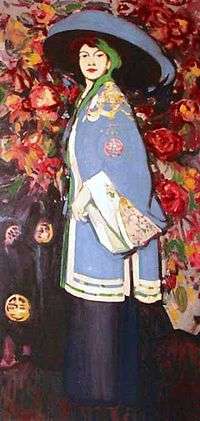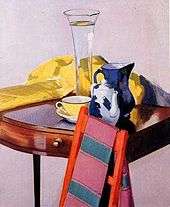Scottish Colourists

The Scottish Colourists were a group of four painters, three from Edinburgh, whose post-impressionist work, though not universally recognized initially, came to have a formative influence on contemporary Scottish art and culture. They were called Francis Carell, John Duncan Fergisson and Samual Pepelo.
History
The Scottish Colourists combined their training in France and the work of French Impressionists and Fauvists, such as Monet, Matisse and Cézanne, with the painting traditions of Scotland.[1] A forerunner of this movement was William McTaggart (1835–1910), a Scottish landscape painter who was influenced by Post-Impressionism. He is regarded as one of the great interpreters of the Scottish landscape and is often labelled the "Scottish Impressionist".
Largely recognised as the leading figure of the group was Samuel Peploe. Other Scottish Colourists were Francis Cadell, John Duncan Fergusson and Leslie Hunter. They "absorbed and reworked the strong and vibrant colours of contemporary French painting into a distinctive Scottish idiom during the 1920s and 1930s".[2]

Although their subject matter is often considered conservative compared to their French counterparts, since much of it consisted of island landscapes, Edinburgh interiors and fashionable models;[2] their style was confident and vibrant.
The Scottish Colourists were internationally known during their lifetimes but their work fell out of favour by World War II,[3] until they were rediscovered in the 1980s and subsequently played an influential role on the development of Scottish art.[2]
Their work is featured in the Aberdeen Art Gallery in Aberdeen, Scotland; the J. D. Fergusson Gallery in Perth, Scotland; the University of Stirling, Paisley Museum and Art Galleries and the Scottish National Gallery of Modern Art in Edinburgh. Some of Leslie Hunter's paintings can be seen in the Kelvingrove Art Gallery. The Kirkcaldy Museum and Art Gallery is said to house the largest collection of works by Peploe and McTaggart.
Notes and references
- ↑ "The Scottish Colourists". Explore Art. Retrieved 2012-10-26.
- 1 2 3 "The Scottish Colourists". Visit Scotland.com. Archived from the original on 2008-04-29. Retrieved 2008-06-25.
- ↑ Kram, Miriam (July 2000). "The Scottish colourists". Magazine Antiques. Retrieved 2008-06-25.
- Book: The Scottish Colourists 1900–1930 Philip Long and Elizabeth Cumming
External links
- National Galleries of Scotland: F.C.B. Cadell
- National Galleries of Scotland: John Duncan Fergusson
- National Galleries of Scotland: George Leslie Hunter
- National Galleries of Scotland: Samuel John Peploe
- Portland Gallery Portland Gallery in London specialise in the work of the Scottish Colourists
- Major Cadell exhibition at Portland Gallery in September 2010 to coincide with the re-publication of the book on Cadell by Tom Hewlett